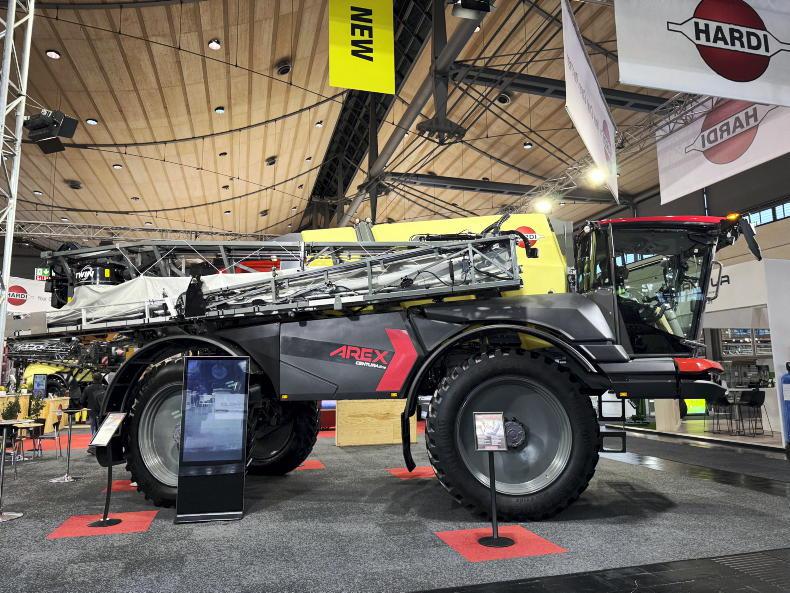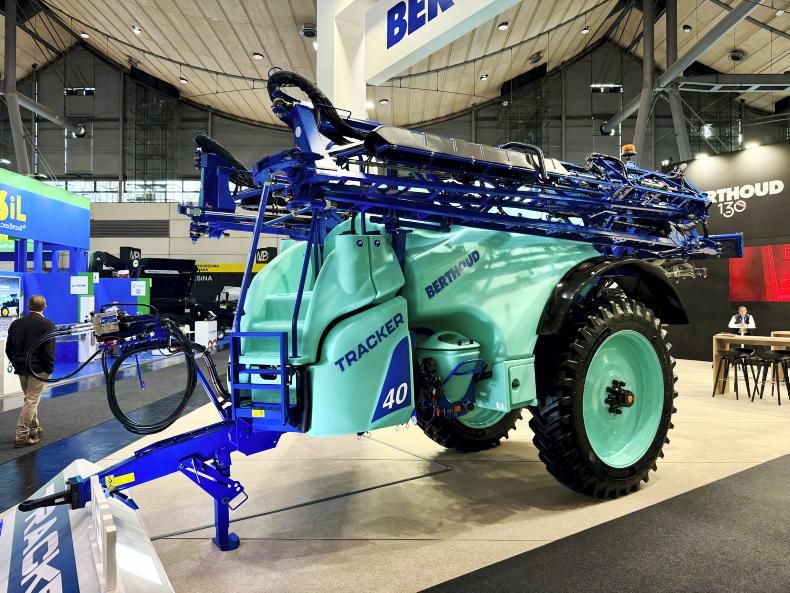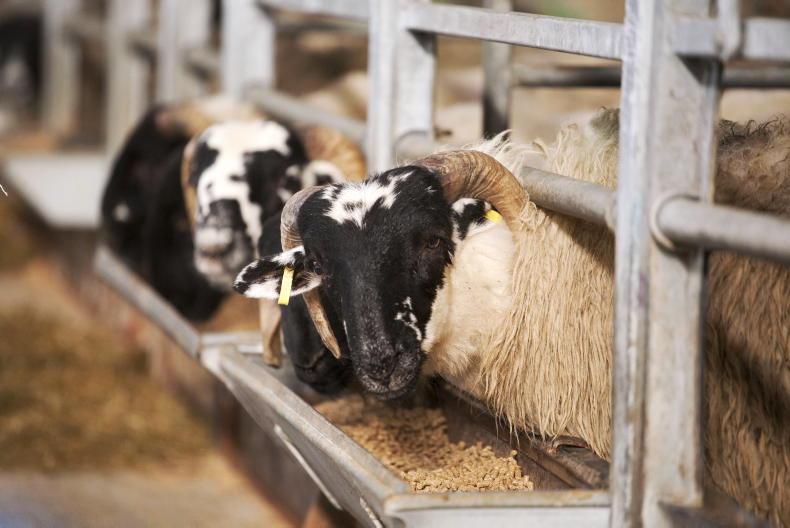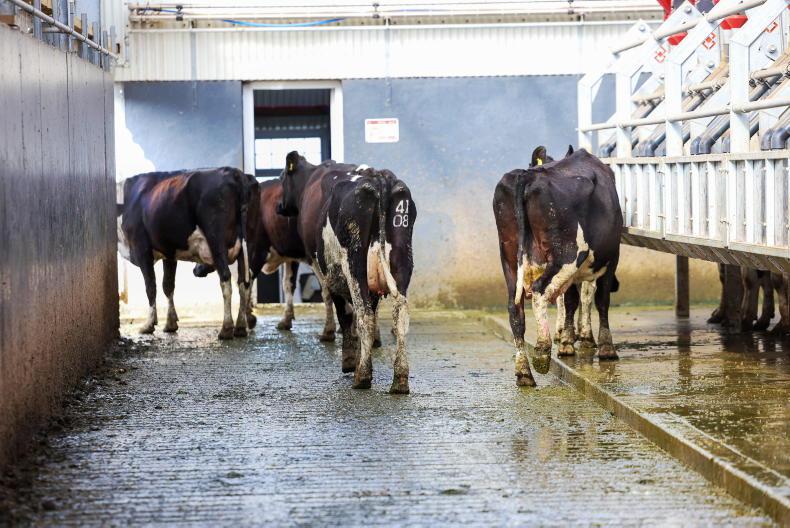While the mild weather of late puts the likes of frost far out of our minds, it will likely make an appearance before the month is out, be it severe or just a sharpness to air in the early morning.
A common misconception is that water only freezes and does damage at 0°c, but water expands where temperatures drop below 4°c, and damage can be done from this point.
While plastic fittings and water troughs will be able to cope in most cases, the same can’t be said for pumps, concrete troughs and metal water fittings. Below are some key tips for protecting these from frost damage this winter.
1 Well pumps
A lot of farms still have wells on site serving both the dwelling house and farm troughs, with a pumphouse beside it. While an enclosed pumphouse goes some way towards protecting the pump from the elements, it is often a bare concrete block structure with a steel cladding roof.
Two options exist to help prevent frost penetrating. Firstly, farmers can add insulation to the walls and roof. A second and simpler option is to install a thermostat-controlled infrared bulb suspended over the pump.
The thermostat breaks the circuit when the temperature goes above the set threshold, only kicking in when the temperature dips below.
This removes the need for the farmer to manually turn on an infra-red bulb and ensures the pump is always protected when the temperature reaches freezing point.
Such thermostats can be easily wired into the existing lead of an infrared lamp and should be available at your local electrical supplier
2 Water troughs
The biggest danger with water troughs is concrete troughs left full over the winter, where freezing water can expand, causing the concrete to crack and leak, making the trough useless. Most modern larger troughs will have a plug at the base that allows them to be drained.
Some farmers will use small electric pumps or simply manually empty troughs. Once this is done, the water travelling to these troughs should be switched off. It’s a good idea to fit a stop-cock at each water trough to allow them to be individually turned off.
Not only is this useful for knocking off troughs in winter, but it also aids in repair works for leaking troughs in the grazing season.
Frost aside, it is a good idea to empty troughs to ensure that water isn’t left stagnant over the winter while stock are housed.
Plastic water troughs are not known to crack, although it is still good practice to empty them anyway. It takes significant low temperatures to freeze water in a trough, but troughs should be checked daily where livestock are present to ensure that water hasn’t frozen over.
3 Water piping
Water pipes running underground will be sufficiently insulated to prevent them from freezing over.
It is when the pipe emerges from the ground to connect to water troughs that it is left exposed to freezing air temperatures. When water is constantly flowing through them – i.e. when cattle are drinking – water won’t freeze unless temperatures are significantly below 0°C. Lagging or insulation should be placed on all exposed piping to prevent against freezing temperatures.
Several farms I have seen use a tap situated on the outside of the shed to keep water flowing. The tap is situated at the opposite end of the shed from where the water enters, where it is left on overnight in hard frost conditions
The constant flow of water through the trickling tap prevents the piping in the shed from freezing over as cattle rest overnight.
4 Machinery pumps
In a similar way to well pumps, pumps on tractor sprayers and slurry tankers are prone to damage through frost.
Placing machinery in storage will help protect it from the worst of the elements, but it is also best practice to cover pumps with an insulating material.
Where sprayers are concerned, ensure all water is drained from the pump before storing it away for the winter months. Power washers and wash-down pumps are two other often forgotten machinery items when it comes to frost protection, and these should be placed in a well-insulated area.
Where a warm machinery shed is not possible, then storing items temporarily in a livestock shed will aid in preventing frost damage.
The heat from the livestock will protect against frost damage to a certain extent, though long-term storage of machinery in livestock sheds is not recommended due to the moisture in the air causing accelerated rusting.
In short
Keep well pumps insulated or protected using an infrared bulb.Empty and switch off water troughs where livestock are not present.Keep water pipes protected by lagging.Store machinery with pumps in insulated storage sheds or store temporarily in livestock sheds.
While the mild weather of late puts the likes of frost far out of our minds, it will likely make an appearance before the month is out, be it severe or just a sharpness to air in the early morning.
A common misconception is that water only freezes and does damage at 0°c, but water expands where temperatures drop below 4°c, and damage can be done from this point.
While plastic fittings and water troughs will be able to cope in most cases, the same can’t be said for pumps, concrete troughs and metal water fittings. Below are some key tips for protecting these from frost damage this winter.
1 Well pumps
A lot of farms still have wells on site serving both the dwelling house and farm troughs, with a pumphouse beside it. While an enclosed pumphouse goes some way towards protecting the pump from the elements, it is often a bare concrete block structure with a steel cladding roof.
Two options exist to help prevent frost penetrating. Firstly, farmers can add insulation to the walls and roof. A second and simpler option is to install a thermostat-controlled infrared bulb suspended over the pump.
The thermostat breaks the circuit when the temperature goes above the set threshold, only kicking in when the temperature dips below.
This removes the need for the farmer to manually turn on an infra-red bulb and ensures the pump is always protected when the temperature reaches freezing point.
Such thermostats can be easily wired into the existing lead of an infrared lamp and should be available at your local electrical supplier
2 Water troughs
The biggest danger with water troughs is concrete troughs left full over the winter, where freezing water can expand, causing the concrete to crack and leak, making the trough useless. Most modern larger troughs will have a plug at the base that allows them to be drained.
Some farmers will use small electric pumps or simply manually empty troughs. Once this is done, the water travelling to these troughs should be switched off. It’s a good idea to fit a stop-cock at each water trough to allow them to be individually turned off.
Not only is this useful for knocking off troughs in winter, but it also aids in repair works for leaking troughs in the grazing season.
Frost aside, it is a good idea to empty troughs to ensure that water isn’t left stagnant over the winter while stock are housed.
Plastic water troughs are not known to crack, although it is still good practice to empty them anyway. It takes significant low temperatures to freeze water in a trough, but troughs should be checked daily where livestock are present to ensure that water hasn’t frozen over.
3 Water piping
Water pipes running underground will be sufficiently insulated to prevent them from freezing over.
It is when the pipe emerges from the ground to connect to water troughs that it is left exposed to freezing air temperatures. When water is constantly flowing through them – i.e. when cattle are drinking – water won’t freeze unless temperatures are significantly below 0°C. Lagging or insulation should be placed on all exposed piping to prevent against freezing temperatures.
Several farms I have seen use a tap situated on the outside of the shed to keep water flowing. The tap is situated at the opposite end of the shed from where the water enters, where it is left on overnight in hard frost conditions
The constant flow of water through the trickling tap prevents the piping in the shed from freezing over as cattle rest overnight.
4 Machinery pumps
In a similar way to well pumps, pumps on tractor sprayers and slurry tankers are prone to damage through frost.
Placing machinery in storage will help protect it from the worst of the elements, but it is also best practice to cover pumps with an insulating material.
Where sprayers are concerned, ensure all water is drained from the pump before storing it away for the winter months. Power washers and wash-down pumps are two other often forgotten machinery items when it comes to frost protection, and these should be placed in a well-insulated area.
Where a warm machinery shed is not possible, then storing items temporarily in a livestock shed will aid in preventing frost damage.
The heat from the livestock will protect against frost damage to a certain extent, though long-term storage of machinery in livestock sheds is not recommended due to the moisture in the air causing accelerated rusting.
In short
Keep well pumps insulated or protected using an infrared bulb.Empty and switch off water troughs where livestock are not present.Keep water pipes protected by lagging.Store machinery with pumps in insulated storage sheds or store temporarily in livestock sheds. 








SHARING OPTIONS